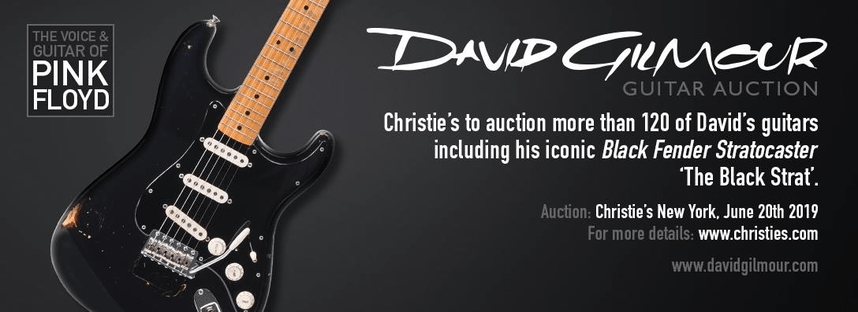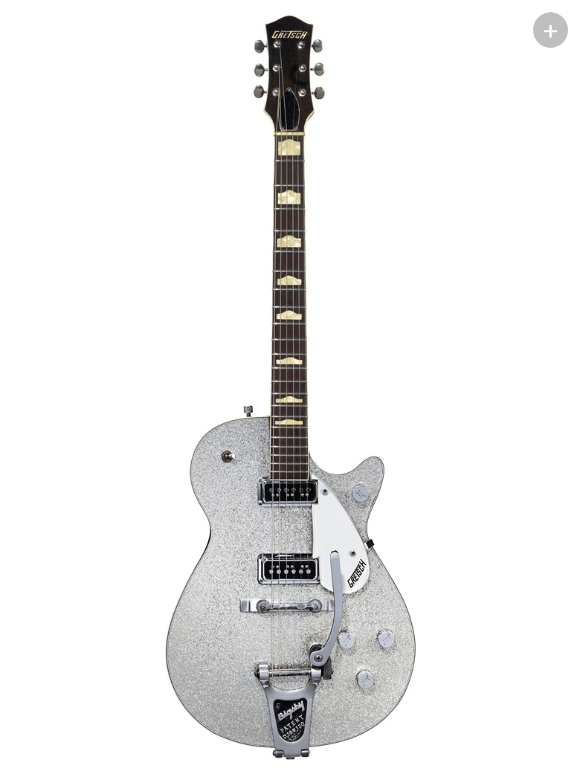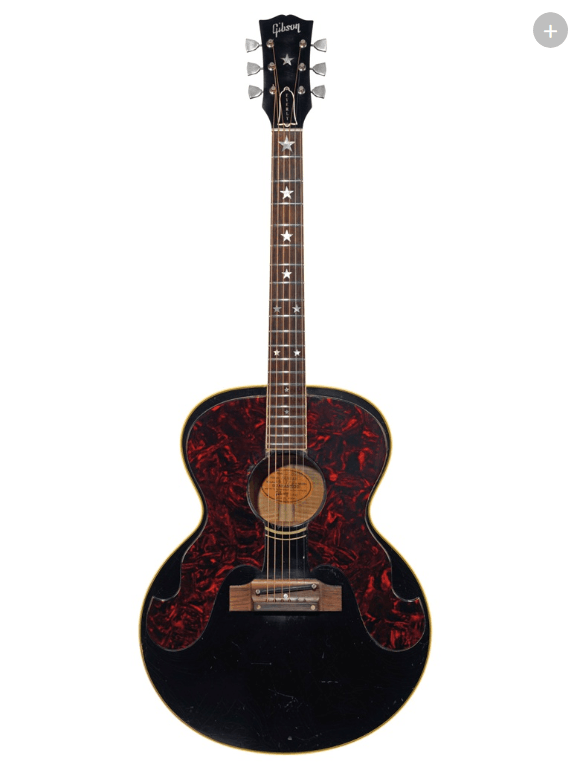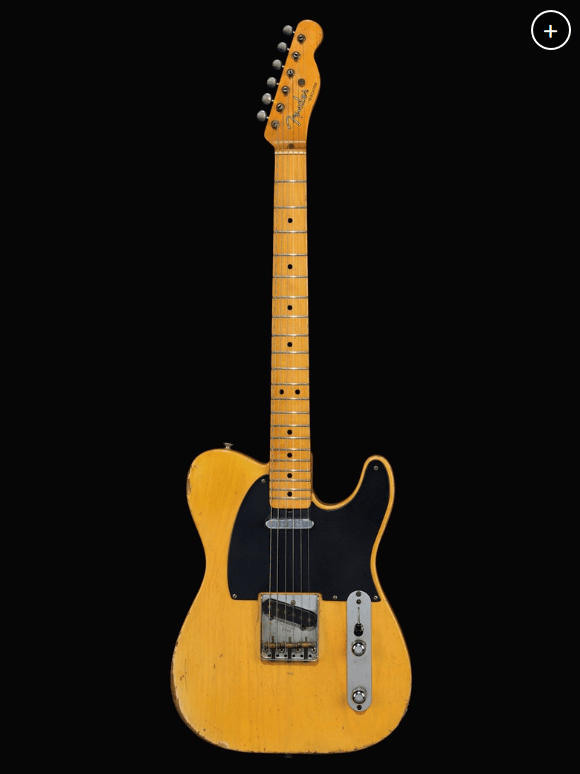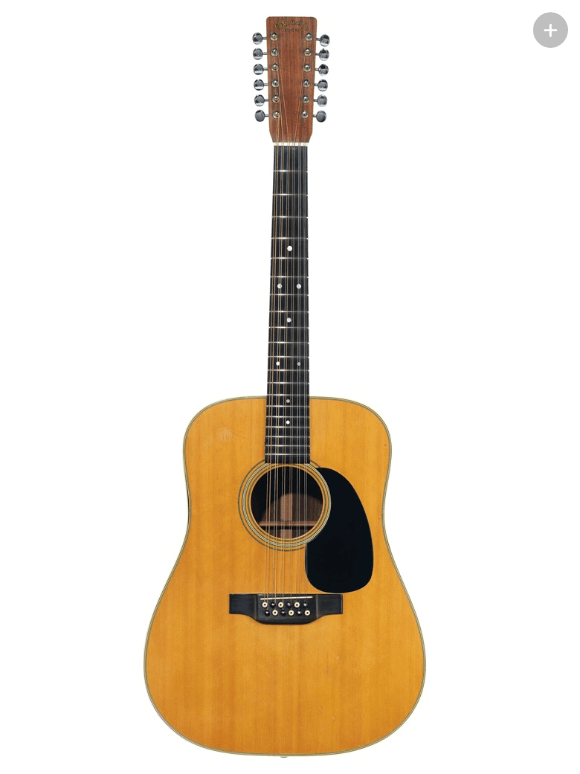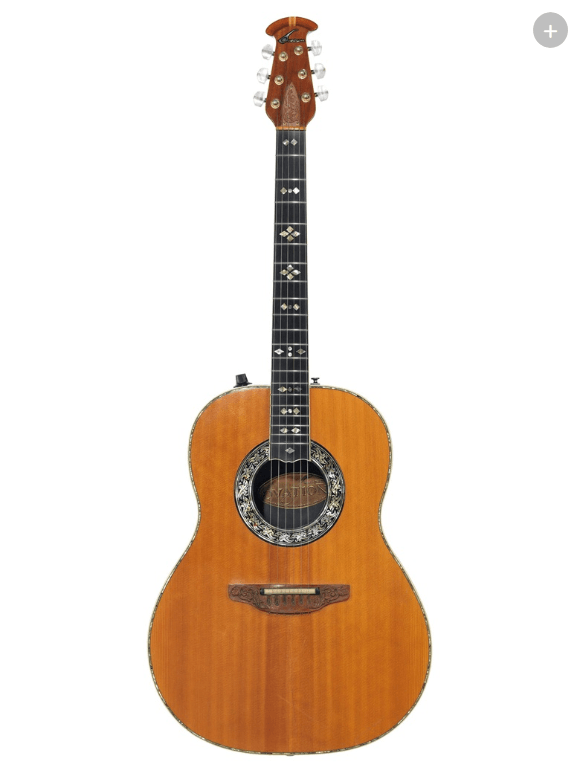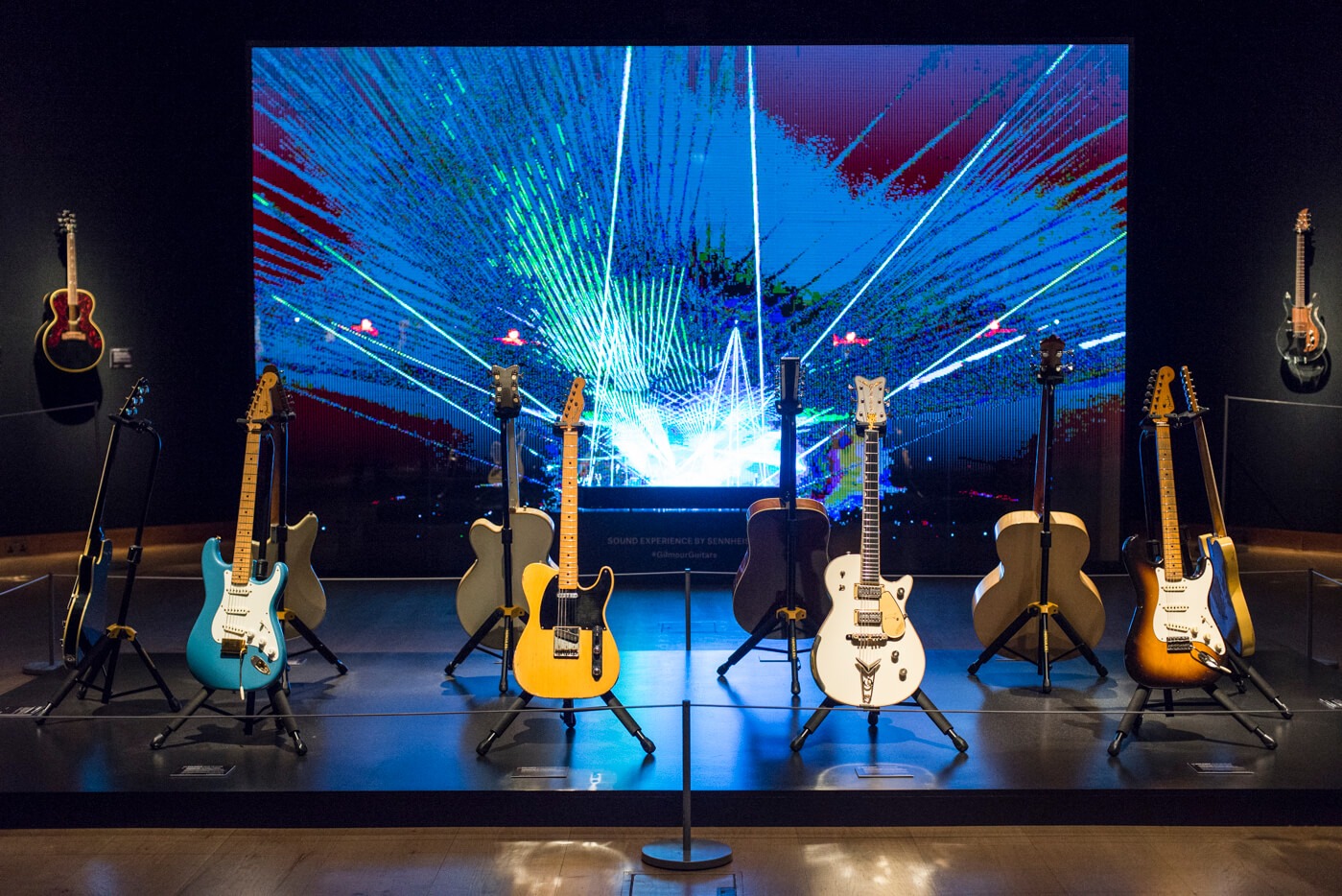
The pre-sale exhibition features immersive multimedia. All images: Eleanor Jane
In January, Christie’s announced details of David Gilmour’s intention to auction over 120 instruments from his personal guitar collection in New York on 20 June 2019, with the sale proceeds benefiting charitable causes.
Sure to be the most lucrative guitar auction in history, the collection comprises guitars that the Pink Floyd star has used throughout his career, including his famous black 1969 Stratocaster aka ‘The Black Strat’. Other highlights include the all-gold 1955 Les Paul used for the solo on Another Brick In The Wall (Part 2) and the white #0001 Stratocaster used to record the song’s rhythm part.
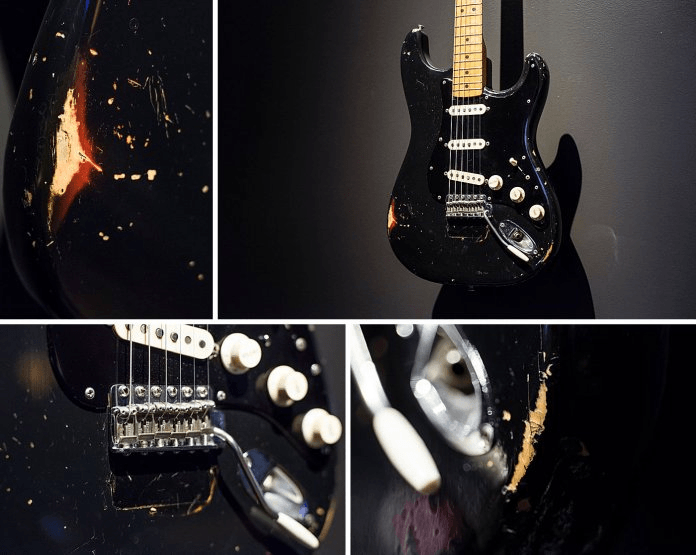
Gilmour purchased his 1969 Stratocaster at Manny’s in New York in 1970
Wednesday 27 March saw Christie’s host a special media preview of the pre-sale exhibition at its London saleroom. Featuring every instrument in the sale, the exhibition will be open to the public until 31 March. Entry is free, with timed tickets available via the auction house. Highlights of the sale will then be exhibited in Los Angeles from 7-11 May, before the collection is reassembled for the New York sale preview from 14-19 June.
Wish you were here?
This morning’s media preview event begins with the auction house’s musical instruments specialist Kerry Keane opening The Black Strat’s case in front of a scrum of photographers, declaring, “Here is the most iconic guitar in rock ‘n’ roll history.” After marvelling at the jaw-dropping array of guitars on display – including so many with voices familiar to millions of music fans across the globe – we sit down with Keane to find out more.
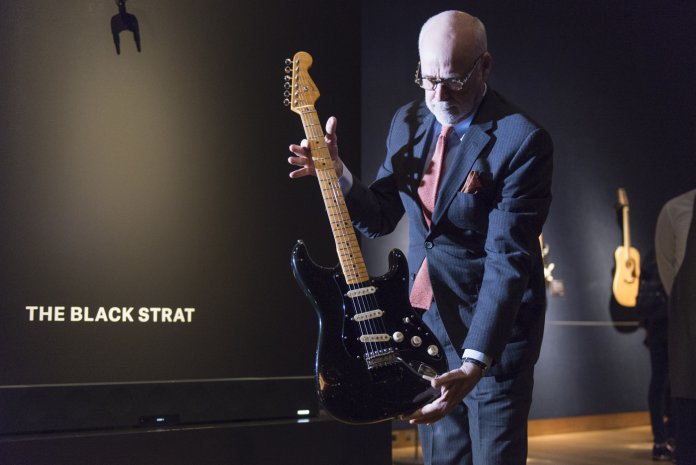
Kerry Keane from Christie’s unveils The Black Strat to the media
“It’s an extraordinary collection and it’s wonderful to be surrounded by guitars of this quality,” says Keane. “We have good expectations, as does Mr Gilmour. The important aspect there is the mission. The mission of this sale is for proceeds to fulfil those philanthropic passions that Mr Gilmour has.”
“I’ve had a few wonderful conversations with him and a day spent with him back last year, talking about the collection and talking about what excited him and the guitars that he’s passionate about,” Keane continues.
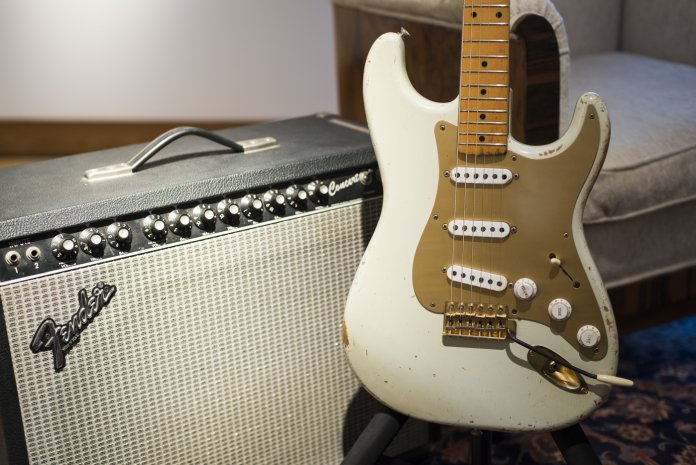
Gilmour’s white Stratocaster features the serial number 0001
“When I first started vetting the collection, it became evident that there are instruments here that exhibit a wide berth of guitar history, from the very early Rickenbacker [lap steel] to more contemporary guitars made maybe only 10 years ago.”
“In his instrument collection, when it concentrated say on Fenders, I was excited to find an extraordinarily pure Esquire, the magnificent ’52 Blackguard Telecaster, a couple of Broadcasters, a ’54 Stratocaster, that’s fun stuff.”
And it’s not just Fenders: “One turns their back and they look on the other side of the room and here’s this terrific ’55 Les Paul that gave that thick and rich solo to Another Brick In The Wall. What I find interesting is, it is obligatory for any rock guitarist to own a Les Paul, but they tend to gravitate towards humbuckers.”
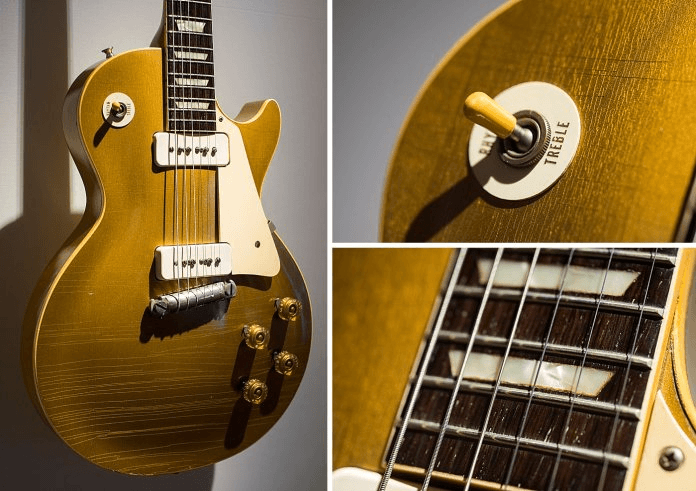
This ’55 all-gold Les Paul was used for the solo on Another Brick In The Wall (Part 2)
“Mr Gilmour is a single-coil man, and he loves P-90s. He described it as giving a ‘raunchier sound’. In his hands, that solo is spectacular. It’s rich, thick and lyrical. What he pulls out of that P-90 is quite phenomenal.”
High hopes
Although the likes of The Black Strat will inevitably grab the headlines, Floyd fans should fear not – there are guitars in the catalogue that are much more accessible. “There are instruments priced here from $300,” states Keane. “There’s all price points. When one looks at the Takamines, the very reasonably priced Ovations, here’s an opportunity for a collector or musician to buy a guitar that’s reasonably priced that David Gilmour played.”
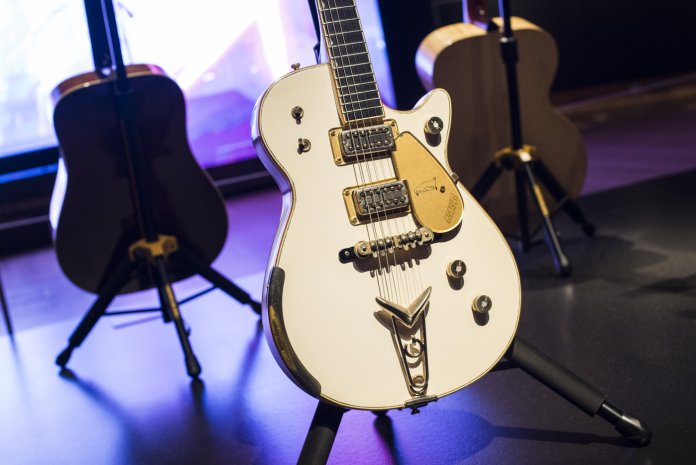
This ultra-rare 1958 Gretsch White Penguin is estimated at $100,000-$150,000
“He’s obviously still touring and performing, so he has kept some guitars for that,” adds Caitlin Graham, pop culture specialist at Christie’s. “But I think we really have the most recognisable and significant guitars from his career in the sale.”
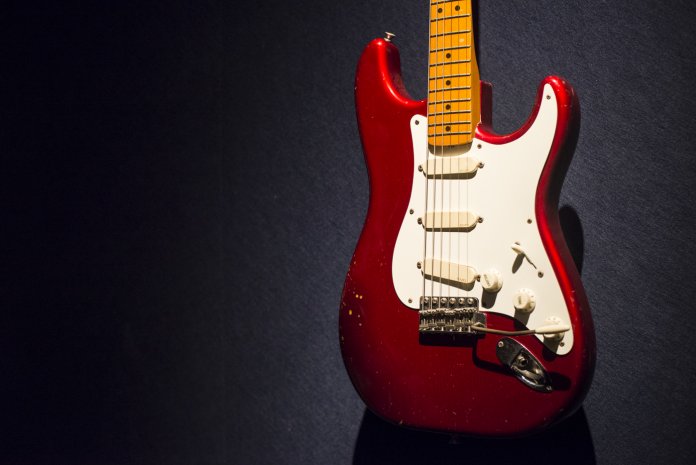
Acquired in 1984, this Strat was Gilmour’s main live squeeze for the next two decades
“There’s the Black Strat, the red Stratocaster that he played for 20 years when the Black Strat was retired for a period and some really lovely acoustic guitars that have been used in the studio since the 1970s. These include the Martin D-35 that has been David Gilmour’s primary studio acoustic since 1971.”
This sale is emphatically not an indication that David Gilmour is set to retire from music, but we’ll leave the final word to the man himself: “Many of the guitars in this sale are guitars that have given me a tune, so a lot of them have earned their keep, you might say,” Gilmour told Christie’s. “These guitars, they’ve given so much to me, it’s time for them to move on to other people who hopefully will find joy and perhaps create something new.”
Stay tuned for more from the David Gilmour auction pre-sale in the coming days.
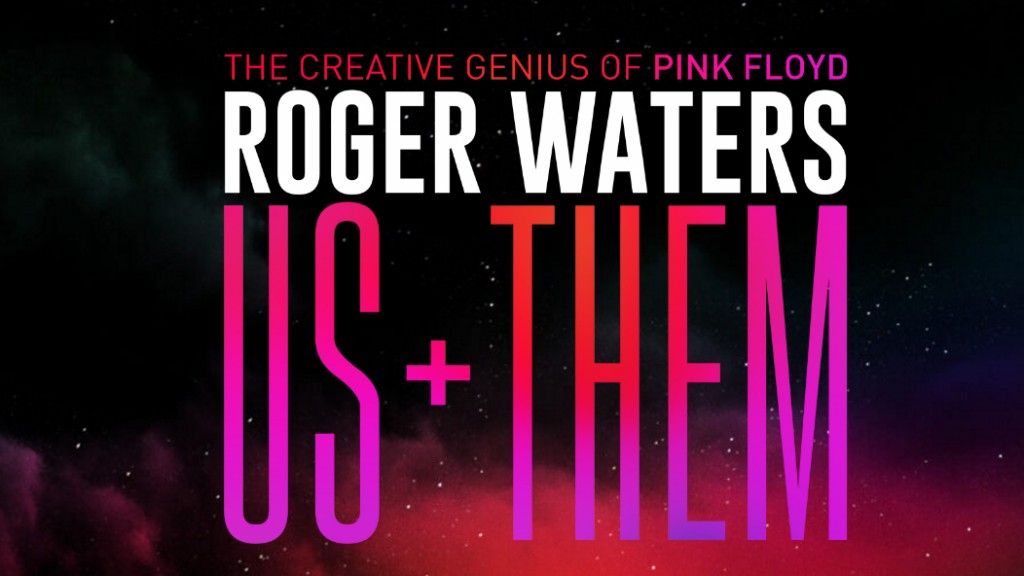

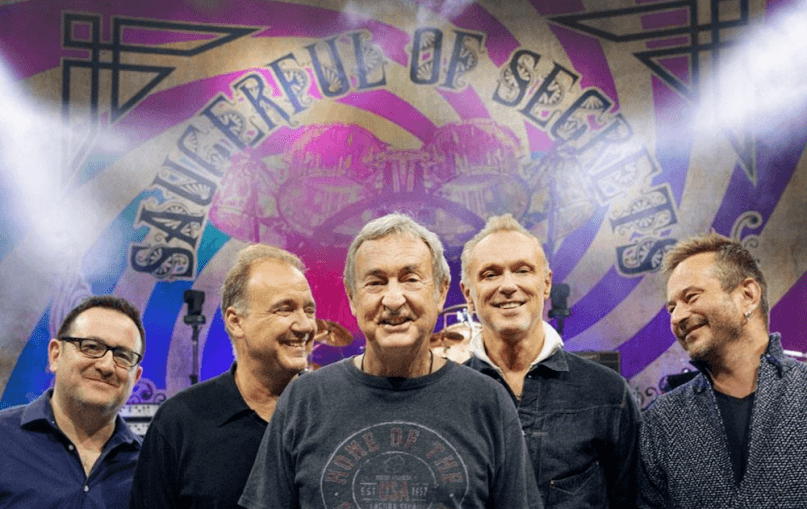 Nick Mason seems to be enjoying being back out on the road, With the european tour in full swing the band have just announced 3 more dates as part of their busy 2019 tour.
Nick Mason seems to be enjoying being back out on the road, With the european tour in full swing the band have just announced 3 more dates as part of their busy 2019 tour. A Statement from Dave Harris reads – ”
A Statement from Dave Harris reads – ” 






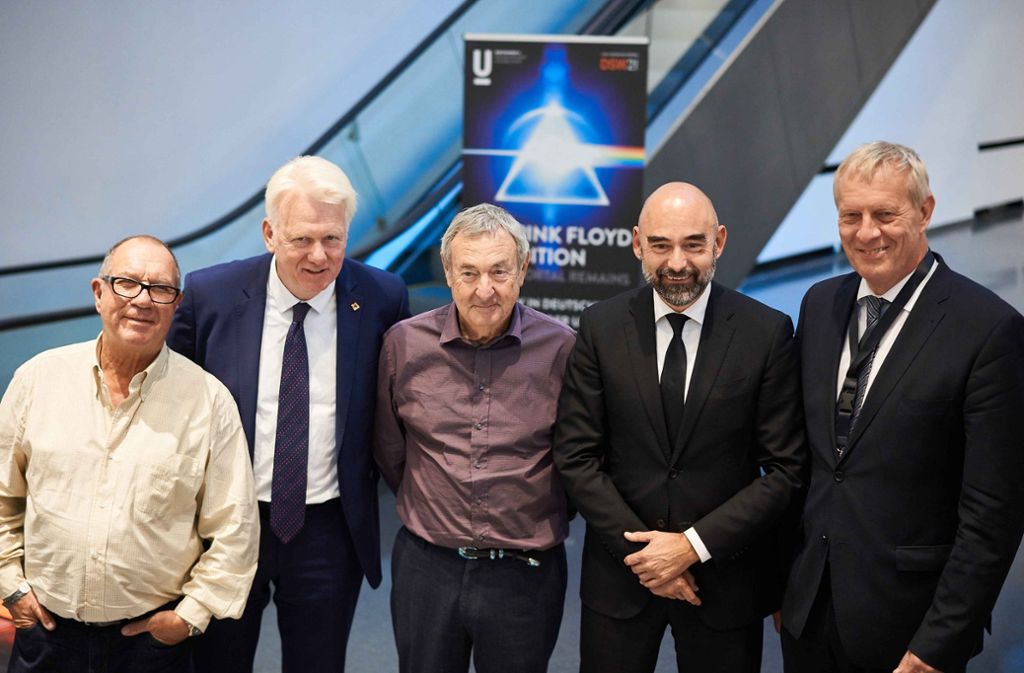
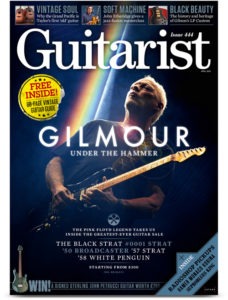 Just hitting the shelves is a new edition of the UK’s Guitarist magazine with an issue number of 444, This is a very intresting edition that features an extensive coverage and anidotes from David Gilmour on his upcoming guitar auction.
Just hitting the shelves is a new edition of the UK’s Guitarist magazine with an issue number of 444, This is a very intresting edition that features an extensive coverage and anidotes from David Gilmour on his upcoming guitar auction.